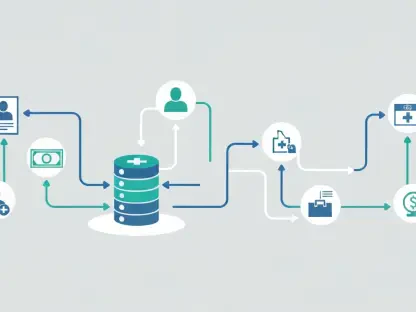In today’s rapidly evolving technological landscape, organizations are increasingly turning to tech consolidation to streamline their IT infrastructures. Economic pressures, operational inefficiencies, and the necessity for modernization are key drivers behind this shift. With IT spending projected to rise significantly, companies are realizing the cost-saving potential and operational benefits of integrating their technology stacks. This article delves into the core motivations, benefits, and strategies of tech consolidation, painting a comprehensive picture of its growing prominence. Understanding why organizations are consolidating their technology systems can provide valuable insights into how businesses are maneuvering to maintain a competitive edge while managing costs and increasing efficiency.
Addressing Tech Sprawl and Redundancy
One significant issue driving the shift towards tech consolidation is the pervasive problem of tech sprawl. Over the years, companies have rapidly acquired various tools and technologies, often without considering interoperability. This has led to a landscape cluttered with disconnected and redundant systems. Reports from firms like Zylo highlight the substantial financial waste stemming from such inefficiencies. By consolidating their tech stacks, organizations can eliminate these redundancies, leading to significant cost savings and improved operational performance. The clutter of redundant technologies and inefficient software not only burdens the financial resources of a company but also hampers the overall operational efficiency.
Tech sprawl not only strains financial resources but also creates operational bottlenecks. Disparate systems can hinder seamless communication and collaboration across departments, affecting overall productivity. Consolidation strategies address these issues by streamlining processes and fostering a more collaborative environment. The resulting uniformity in tools and systems also simplifies training and support, further enhancing efficiency. By removing redundant technologies and creating a more cohesive IT ecosystem, companies can focus on strategic initiatives and innovation rather than managing a patchwork of incompatible tools. In essence, addressing tech sprawl and redundancy is not just about cutting costs but also about creating a more agile and adaptive business environment.
Modernizing IT Infrastructure for Enhanced Performance
Modernizing IT infrastructure is a recurring theme in the tech consolidation discussion. By unifying various services into a cohesive ecosystem, companies can reduce costs while improving performance. Consolidated systems enhance observability, providing IT teams with better insights and control over operations. This modernization effort is not just about cutting costs; it’s about building a more agile and responsive IT framework capable of adapting to evolving business needs. A unified IT infrastructure facilitates easier integration of new technologies, ensuring that companies can quickly adapt to changing market demands and technological advancements.
A modernized IT infrastructure offers increased flexibility, making it easier to integrate new technologies and scale operations. This adaptability is crucial in a rapidly changing business environment where agility can be a competitive advantage. Additionally, consolidated systems can lead to improved cybersecurity as they facilitate better monitoring and quicker responses to potential threats, thereby safeguarding organizational assets more effectively. Modern IT frameworks are designed with scalability and security in mind, allowing businesses to operate more confidently and efficiently. In the long run, the effort to modernize IT infrastructure can result in a technology ecosystem that not only meets current needs but also positions the organization for future growth and success.
The Shift Toward Centralized Systems
Organizations are increasingly moving towards centralized IT systems to maximize their operational efficiencies. Centralization helps achieve economies of scale, streamline processes, and enhance productivity. One prominent method being adopted is the MACH architecture, which stands for microservices, API-first, cloud-based, and headless. This approach provides greater interoperability and simplifies system management, making it a popular choice for modern enterprises. The adoption of MACH architecture signifies a shift from traditional, monolithic IT frameworks to more agile and flexible systems designed to grow and evolve with the business.
Centralized systems provide a unified platform for various business functions, reducing the complexity associated with managing multiple disparate tools. This shift not only leads to cost savings but also fosters innovation by enabling seamless integration of new functionalities. Businesses can focus more on strategic initiatives rather than getting bogged down by operational challenges, driving sustainable growth and competitive advantage. The centralized approach to IT management allows for a more cohesive and integrated operation, breaking down silos and encouraging collaboration across different departments.
Conducting Audits to Eliminate Redundancies
A crucial step in tech consolidation is conducting thorough audits to identify and eliminate redundant technologies. These audits involve evaluating all existing tools and platforms to determine their effectiveness and compliance with organizational goals. By identifying outdated or non-compliant systems, companies can streamline their IT environments without disrupting core operations. This meticulous process ensures that the remaining technologies are not only up-to-date but also fully aligned with the strategic objectives of the organization.
This auditing process ensures that only essential and interoperable technologies remain in use, paving the way for a smoother transition to a consolidated IT framework. Organizations can then allocate resources more efficiently, focusing on innovative solutions that drive business value. Moreover, the elimination of unnecessary tools reduces maintenance costs and minimizes potential security vulnerabilities. By cutting down on the number of tools and platforms, businesses can also reduce the complexity of managing and supporting these systems, leading to more efficient IT operations and support structures.
Prioritizing ROI and Cost Reduction
In the current economic climate, a transparent evaluation of ROI is paramount. One of the driving forces behind tech consolidation is the potential to reduce software spend by up to 30%. Organizations are becoming increasingly cost-conscious, striving to extract maximum value from their technology investments. By consolidating their tech stacks, they not only achieve cost savings but also enhance efficiency and performance. Prioritizing ROI involves a strategic approach to tech investments, ensuring that every dollar spent contributes to the company’s bottom line. The heightened focus on cost efficiency does not mean compromising on the quality or effectiveness of IT services but rather optimizing them for better results.
Prioritizing ROI involves a strategic approach to tech investments, ensuring that every dollar spent contributes to the company’s bottom line. This focus on cost reduction doesn’t compromise the quality or effectiveness of IT services but rather optimizes them for better results. The outcome is a leaner, more efficient IT operation that supports business objectives and drives long-term success. By emphasizing ROI and cost reduction, businesses can make more informed decisions about their technology investments, aligning these decisions with broader business goals.
Enhancing Security and Observability
Modernizing IT infrastructure is a common topic in tech consolidation. By unifying various services within one framework, companies can cut costs and boost performance. Integrated systems enhance observability, giving IT teams better insights and control. This modernization isn’t just about savings; it’s about creating a responsive IT structure that can adapt to business changes. A unified infrastructure makes it easier to adopt new technologies, allowing companies to keep up with market demands and technological advances.
A modern IT setup increases flexibility, making scaling and tech integration simpler. This adaptability is vital in a fast-changing business world where agility offers a competitive edge. Consolidated systems also improve cybersecurity by allowing better monitoring and quicker threat responses, protecting organizational assets more effectively. Modern IT frameworks emphasize scalability and security, enabling businesses to work more confidently and efficiently. Over time, efforts to modernize IT infrastructure result in a technology ecosystem that not only meets current needs but also sets the stage for future growth and success.









